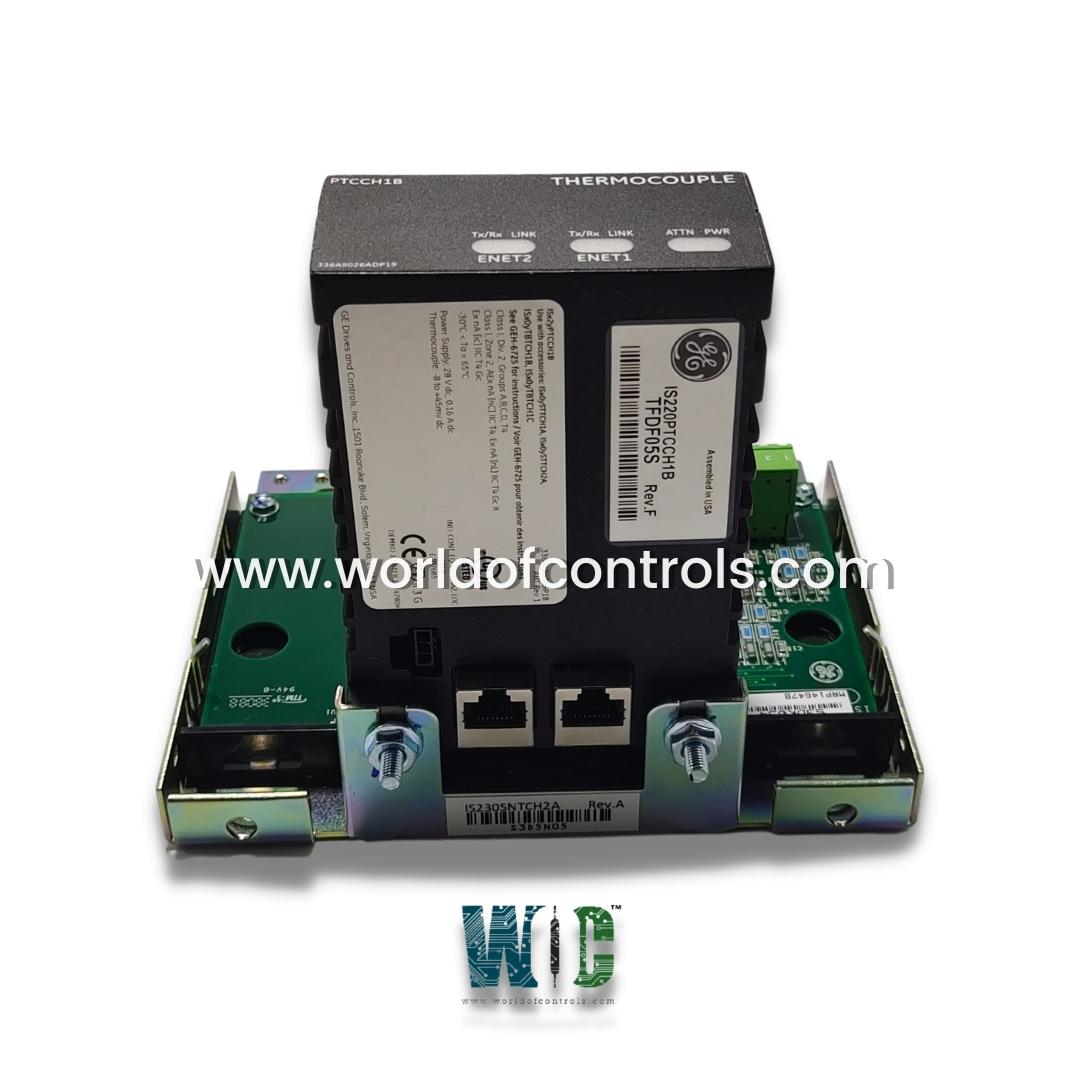
World Of Controls understands the criticality of your requirement and works towards reducing the lead time as much as possible.
IS230SNTRH1A - Simplex Primary Turbine Protection DIN-Rail Module is available in stock which ships the same day.
IS230SNTRH1A - Simplex Primary Turbine Protection DIN-Rail Module comes in UNUSED as well as REBUILT condition.
To avail our best deals for IS230SNTRH1A - Simplex Primary Turbine Protection DIN-Rail Module, contact us and we will get back to you within 24 hours.
SPECIFICATIONS:
Part Number: IS230SNTRH1A
Manufacturer: General Electric
Series: Mark VIe
Product Type: Simplex Primary Turbine Protection DIN-Rail Module
Power supply voltage: 24 V dc
Mounting: DIN-rail mounting
Technology: Surface mount
Operating temperature: -30° to 65°C
Size: 33.0 cm high x 17.8 cm wide
Repair: 3-7 days
Availability: In Stock
Country of Origin: United States
FUNCTIONAL DESCRIPTION:
IS230SNTRH1A is a Simplex Primary Turbine Protection DIN-Rail Module manufactured and designed by General Electric as part of the Mark VIe Series used in GE Distributed Control Systems. This module functions as a real-time safety layer, independently processing turbine-related data such as overspeed, shaft vibration, bearing temperature, and pressure deviations. It is built to work as a standalone protective element or in coordination with a Distributed Control System (DCS) or Programmable Logic Controller (PLC). Equipped with analog and digital signal processing capabilities, it receives input from field sensors, evaluates these against configured thresholds, and activates protective relays when conditions exceed safe limits. The protective response may include turbine trip, fuel cut-off, or activation of emergency shutdown systems (ESD).
INTEGRATION WITH GE DISTRIBUTED CONTROL SYSTEM (DCS):
The module includes several built-in features designed to optimize performance, ease of use, and integration flexibility. Its compact design supports DIN-rail mounting, enabling quick installation in standard electrical enclosures. The housing is typically constructed from high-impact, flame-retardant materials, ensuring safe operation in demanding conditions. Input support includes 4–20 mA, RTD, thermocouple, and proximity probe compatibility. Output features include dry-contact relay outputs for shutdown or alarm, with configurable latching and fail-safe options. Diagnostic LEDs on the module provide immediate visual feedback regarding input status, relay state, and system faults. Communication options—when available—may include RS-485 (Modbus RTU), Ethernet (Modbus TCP/IP), or CAN bus protocols, allowing integration with supervisory control and data acquisition (SCADA) or human-machine interfaces (HMIs).
INSTALLATION:
The module is designed for easy installation on a standard 35mm DIN rail within a control cabinet. The panel should be vibration-isolated and housed in a temperature-controlled environment to ensure long-term reliability. Proper cable routing practices should be followed, with analog signal cables shielded and grounded at one end to minimize electromagnetic interference (EMI). Sensor and actuator connections should be made using clearly labeled terminal blocks with screw or spring clamps to ensure secure contact. The power supply input typically requires a 24V DC regulated source with appropriate circuit protection. Grounding of the module chassis and signal reference is essential to ensure operational integrity and protection against transient voltage disturbances.
CONFIGURATION AND CALIBRATION:
Configuration of the Simplex Protection Module is done through OEM-provided software, DIP switches, or front-panel controls, depending on the model. Key parameters to configure include alarm setpoints, delay timers, hysteresis levels, and output logic. For example, overspeed thresholds can be defined to activate a shutdown relay with a specific time delay to avoid nuisance trips. Calibration involves applying known input values—such as simulated RTD resistance or analog current loops—and adjusting gain/offset parameters to ensure accurate readings. Calibration must be conducted using certified equipment, and it is advisable to maintain a record for compliance and periodic audits.
WOC has the largest stock of OEM Replacement Parts for GE Distributed Turbine Control Systems. We can also repair your faulty boards and supply unused and rebuilt boards backed up with a warranty. Our team of experts is available around the clock to support your OEM needs. Our team of experts at WOC is happy to assist you with any of your automation requirements. For pricing and availability on parts and repairs, kindly contact our team by phone or email.
What is the primary function of the Simplex Primary Turbine Protection Module?
The module provides continuous monitoring of critical turbine parameters and initiates protective actions—such as turbine trip or alarm signaling—when operational limits are exceeded. It ensures rapid mitigation of unsafe conditions to protect both equipment and personnel.
How does a simplex configuration differ from redundant protection architectures?
A simplex configuration employs a single processing path without redundancy. It is suitable for non-critical or cost-sensitive installations where continuous availability is not mandatory. Unlike TMR (Triple Modular Redundancy), simplex systems do not provide fault tolerance through voting logic.
What types of input signals does the module support?
The module typically accepts analog inputs such as 4–20 mA, RTD (e.g., Pt100), thermocouples (e.g., Type K), and dynamic signals from proximity probes or accelerometers, depending on the model. Some versions may also support discrete (digital) inputs.